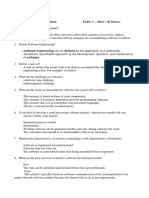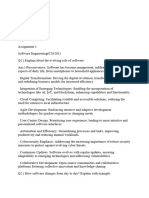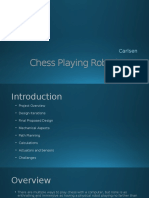0% found this document useful (0 votes)
23 views9 pagesSoftware Engineering
The document provides an overview of software engineering, emphasizing its systematic approach to software development and maintenance, contrasting it with traditional engineering. It discusses various software process models like Waterfall, Spiral, and Agile, as well as the Software Development Life Cycle (SDLC) and the importance of requirements engineering. Additionally, it covers software quality assurance, testing techniques, design patterns, project management, Agile principles, and software process improvement frameworks.
Uploaded by
basitghani021Copyright
© © All Rights Reserved
We take content rights seriously. If you suspect this is your content, claim it here.
Available Formats
Download as PDF, TXT or read online on Scribd
0% found this document useful (0 votes)
23 views9 pagesSoftware Engineering
The document provides an overview of software engineering, emphasizing its systematic approach to software development and maintenance, contrasting it with traditional engineering. It discusses various software process models like Waterfall, Spiral, and Agile, as well as the Software Development Life Cycle (SDLC) and the importance of requirements engineering. Additionally, it covers software quality assurance, testing techniques, design patterns, project management, Agile principles, and software process improvement frameworks.
Uploaded by
basitghani021Copyright
© © All Rights Reserved
We take content rights seriously. If you suspect this is your content, claim it here.
Available Formats
Download as PDF, TXT or read online on Scribd
/ 9
































































































